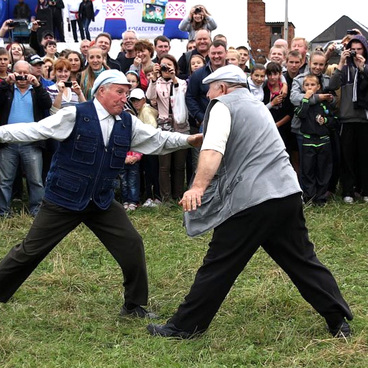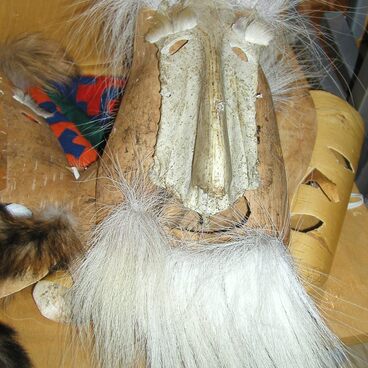Shor players can be found across the whole Altai Republic. The tunes are called шоордыҥ кӱӱзи “Shor melody” or shoorlogon.
The musical instrument is made of a hollow stem of an umbelliferous plant called Siberian giant hogweed. If the instrument is made from a fresh summer stem full of sap, it will lose its acoustic properties once it dries up. The stems become much more solid in autumn when plants wither, and the instruments made from them last for years. Their acoustic properties are much better too: the sound gets brighter and more resonant. The tone also depends on the stem section: the thicker the stem, the lower the sound the shor makes.
Making the instrument is not time-consuming. First, the thicker end of a stem gets a slanted tip, then an opening is made with a sharp edge to blow through. The maker uses the right arm’s reach to adjust the length of the instrument and achieve the best sound. The thinner end of the shor is made either oblique or straight to the player’s liking.
It is believed that the sound of shor is euphonious to mountain spirits, which led to a long-established tradition of bringing a shor player on trips to taiga. People used the sound of shor to let the spirits know of their coming.
The musical instrument is made of a hollow stem of an umbelliferous plant called Siberian giant hogweed. If the instrument is made from a fresh summer stem full of sap, it will lose its acoustic properties once it dries up. The stems become much more solid in autumn when plants wither, and the instruments made from them last for years. Their acoustic properties are much better too: the sound gets brighter and more resonant. The tone also depends on the stem section: the thicker the stem, the lower the sound the shor makes.
Making the instrument is not time-consuming. First, the thicker end of a stem gets a slanted tip, then an opening is made with a sharp edge to blow through. The maker uses the right arm’s reach to adjust the length of the instrument and achieve the best sound. The thinner end of the shor is made either oblique or straight to the player’s liking.
It is believed that the sound of shor is euphonious to mountain spirits, which led to a long-established tradition of bringing a shor player on trips to taiga. People used the sound of shor to let the spirits know of their coming.



